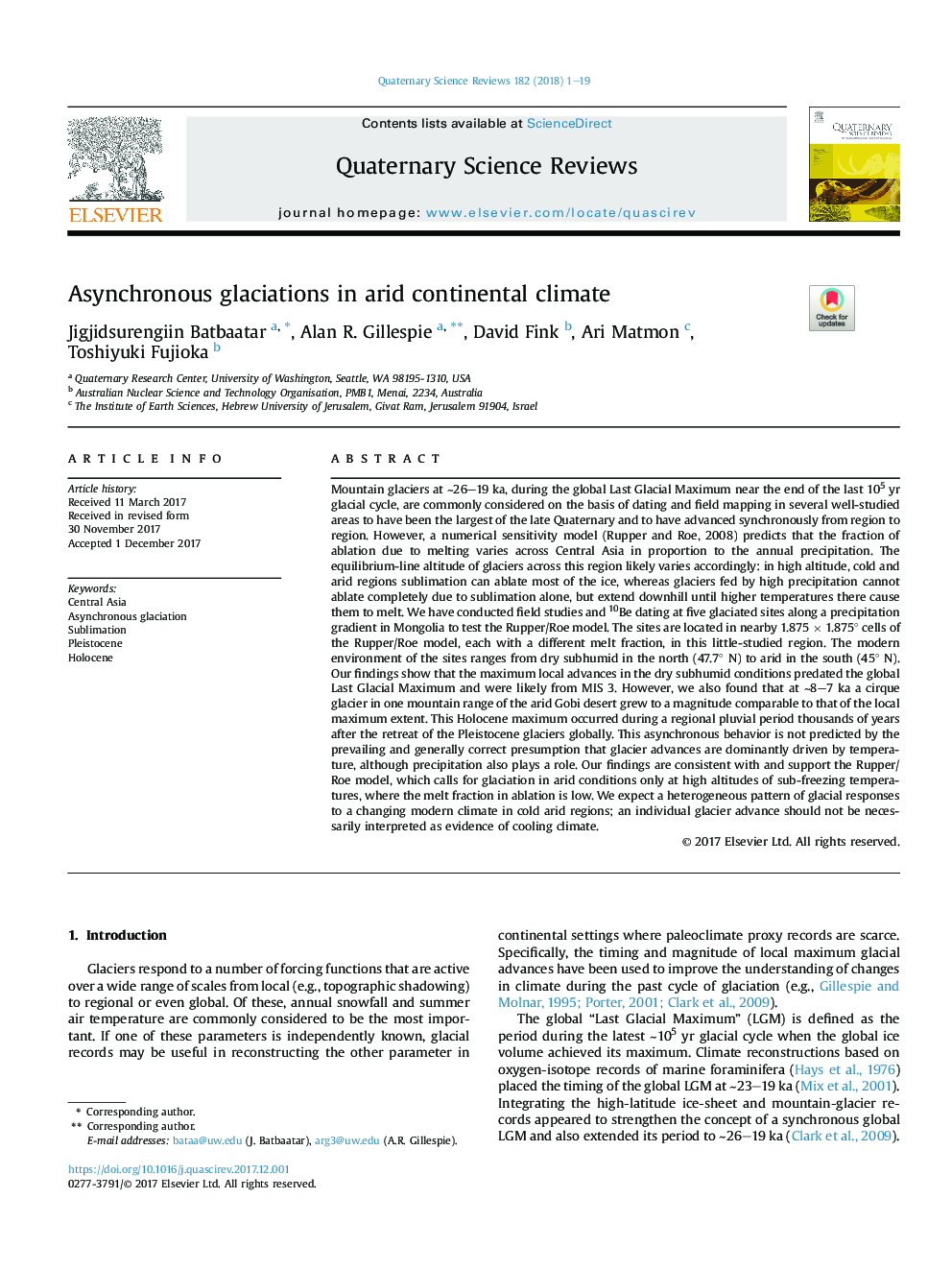| Article ID | Journal | Published Year | Pages | File Type |
|---|---|---|---|---|
| 8914984 | Quaternary Science Reviews | 2018 | 19 Pages |
Abstract
Mountain glaciers at â¼26-19 ka, during the global Last Glacial Maximum near the end of the last 105 yr glacial cycle, are commonly considered on the basis of dating and field mapping in several well-studied areas to have been the largest of the late Quaternary and to have advanced synchronously from region to region. However, a numerical sensitivity model (Rupper and Roe, 2008) predicts that the fraction of ablation due to melting varies across Central Asia in proportion to the annual precipitation. The equilibrium-line altitude of glaciers across this region likely varies accordingly: in high altitude, cold and arid regions sublimation can ablate most of the ice, whereas glaciers fed by high precipitation cannot ablate completely due to sublimation alone, but extend downhill until higher temperatures there cause them to melt. We have conducted field studies and 10Be dating at five glaciated sites along a precipitation gradient in Mongolia to test the Rupper/Roe model. The sites are located in nearby 1.875 Ã 1.875° cells of the Rupper/Roe model, each with a different melt fraction, in this little-studied region. The modern environment of the sites ranges from dry subhumid in the north (47.7° N) to arid in the south (45° N). Our findings show that the maximum local advances in the dry subhumid conditions predated the global Last Glacial Maximum and were likely from MIS 3. However, we also found that at â¼8-7 ka a cirque glacier in one mountain range of the arid Gobi desert grew to a magnitude comparable to that of the local maximum extent. This Holocene maximum occurred during a regional pluvial period thousands of years after the retreat of the Pleistocene glaciers globally. This asynchronous behavior is not predicted by the prevailing and generally correct presumption that glacier advances are dominantly driven by temperature, although precipitation also plays a role. Our findings are consistent with and support the Rupper/Roe model, which calls for glaciation in arid conditions only at high altitudes of sub-freezing temperatures, where the melt fraction in ablation is low. We expect a heterogeneous pattern of glacial responses to a changing modern climate in cold arid regions; an individual glacier advance should not be necessarily interpreted as evidence of cooling climate.
Related Topics
Physical Sciences and Engineering
Earth and Planetary Sciences
Geology
Authors
Jigjidsurengiin Batbaatar, Alan R. Gillespie, David Fink, Ari Matmon, Toshiyuki Fujioka,
